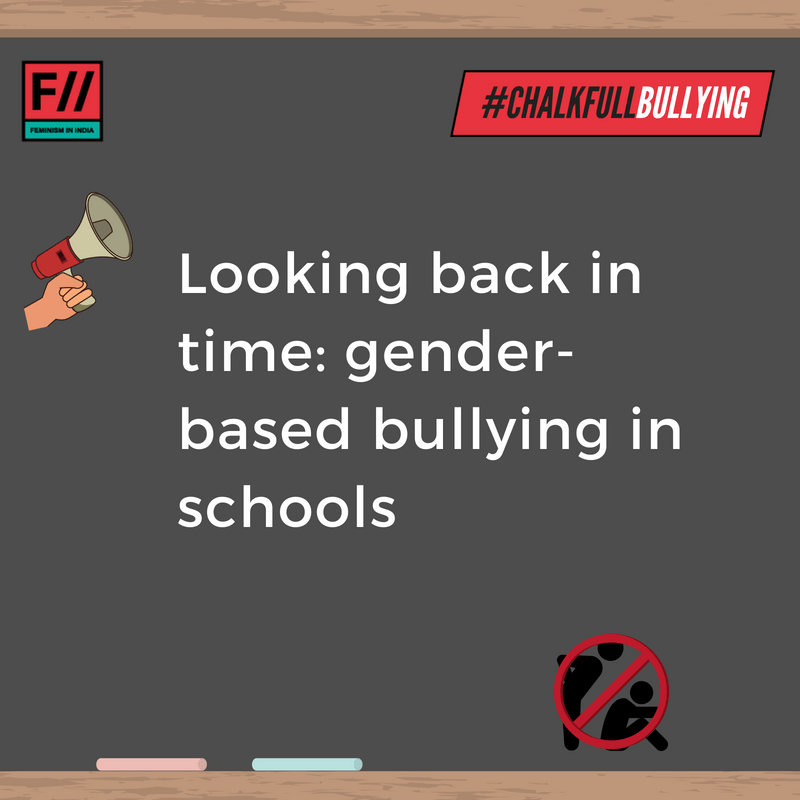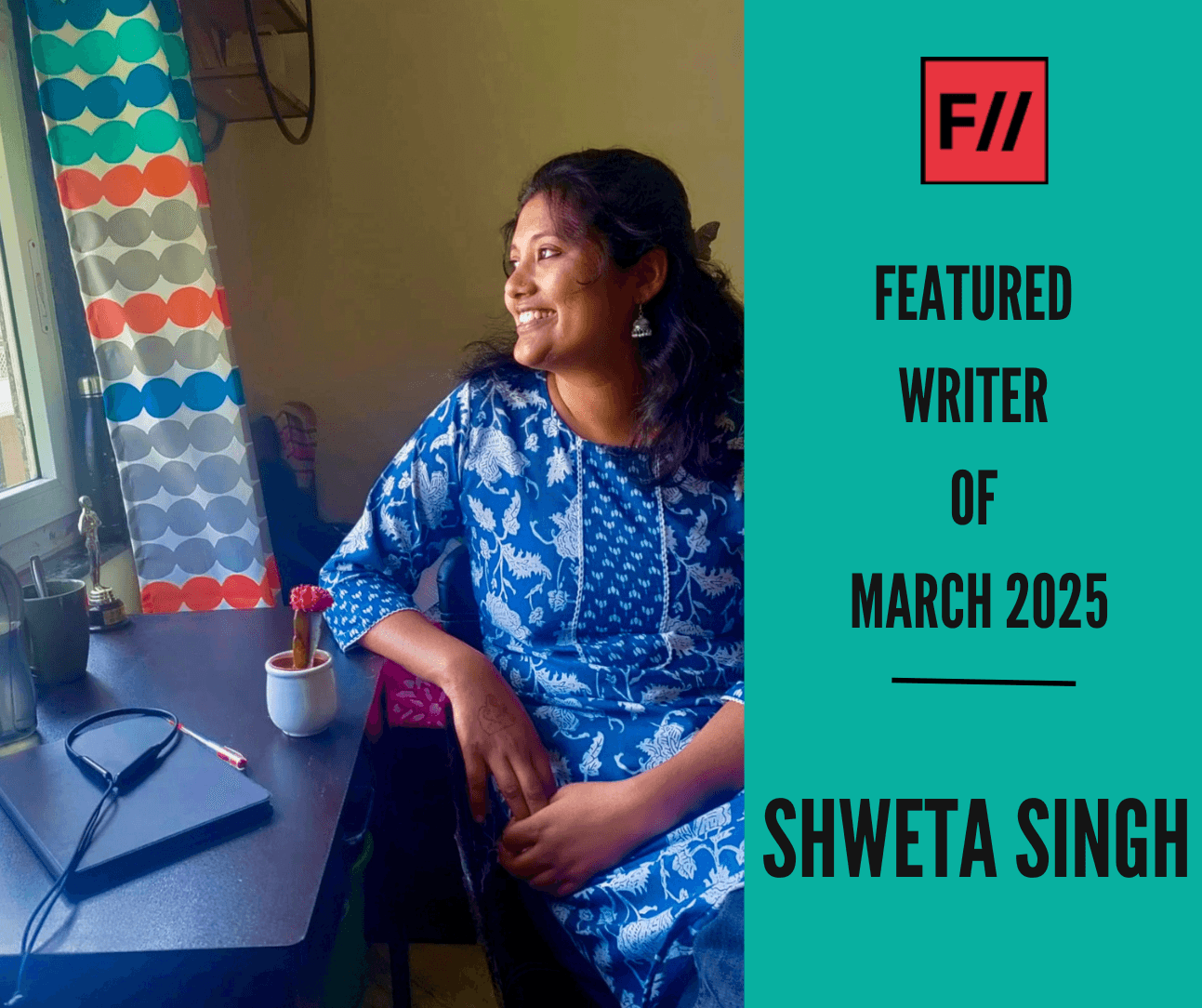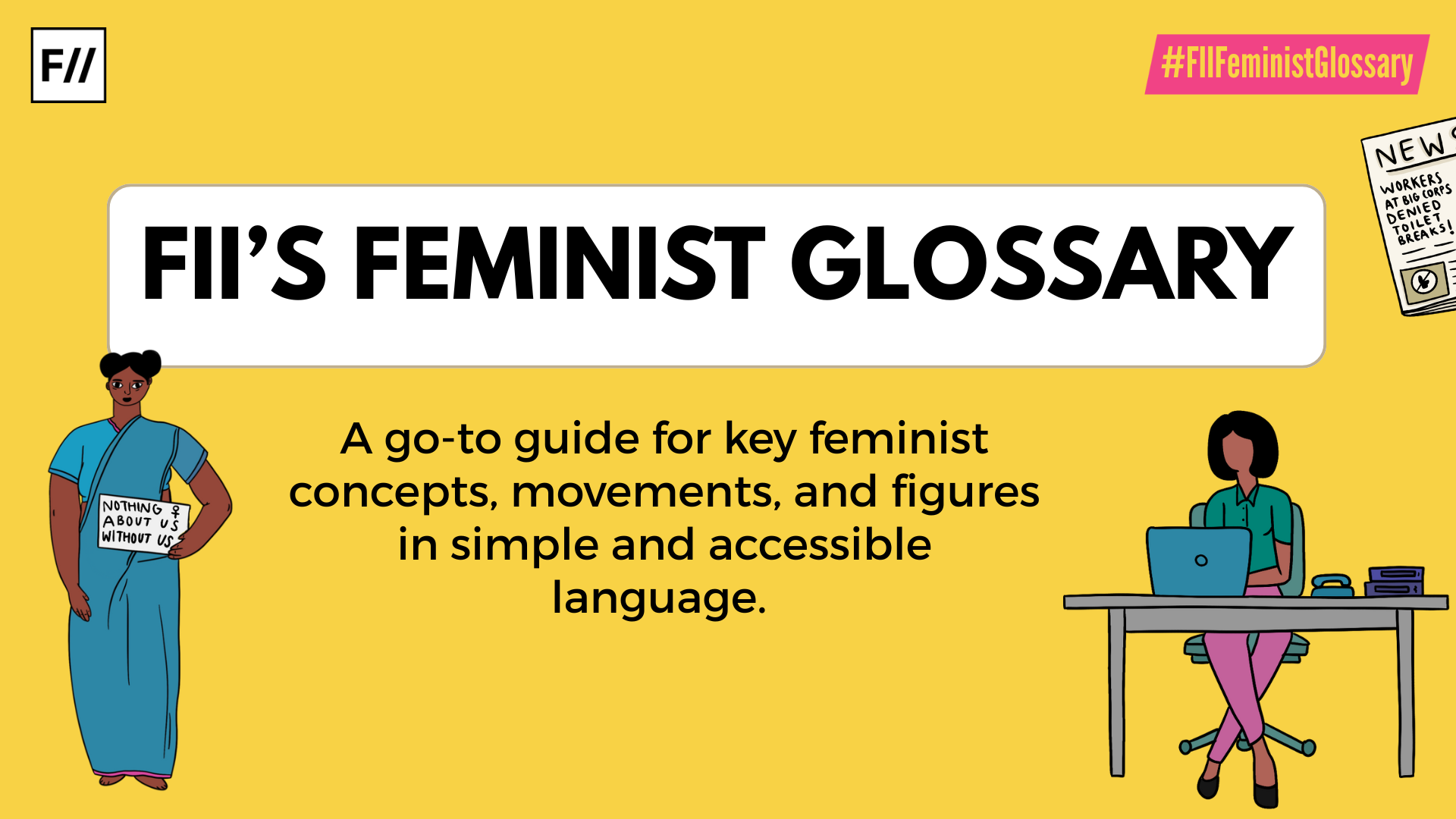So many of us have warm, nostalgic stories to share of our time in school. Irrespective of how progressive/regressive/exclusionary our schools have been, these are the spaces we have called a secondary home. Our schools have nurtured us, shaped our minds as children, played a crucial role in determining who we would grow up to be as adults; and enabled us to form friendships that would last for life.
While all of the above attests to the narratives of many, it is not possible for all of us to have a homogenous experience of school. Some of us did not have the privilege to think of schools as home. Some of us were unhappy, which was enabled by various factors situated within these educational institutions.
We at Feminism in India conducted a campaign titled #ChalkfullBullying – addressing gender-based bullying in schools. We documented narratives of people from various schools all over the country comprising the gender-based bullying that students in schools were subject to – via individuals, peer circles and authority figures in the institution itself. The aim of this initiative was to record how various students have been made vulnerable in institutions that were their secondary social units. The campaign duration was from 15th to 31st March, 2018.
For this campaign, we took on documentation in varied forms in order to assure that most of the people reaching out to us, with name and anonymously, had a platform to share their stories.
1) Articles
We started with publishing articles that were first-person narratives of gender-based bullying survivors. The stories ranged from moral policing, period-shaming, slut-shaming to misogynist conditioning (alleged ‘life skills’) and even incidences of sexual harassment, queerphobia and communal discrimination that students, predominantly female students, were subject to, during their time in school.
The complete list of articles published in this campaign can be found here. We had one external contribution to our campaign that can be found here.
2) Social media posts
For those of our contributors who were unable to write fully-fledged articles, we encouraged them to send us their stories in the form of social media posts. The social media posts entailed a few lines from the main testimonies and the complete body of the testimonies posted as captions. The articles had social media posts attached to them as well. Some of which can be found below:
Also Read: Where’s The Prestige Now? St Anthony’s Students Speak Out | #ChalkfullBullying
3) Instagram highlights

Through our Instagram account, we invited people to share their narratives with us directly, which we featured as stories and highlights. This process was an eye-opener in realising that it’s not just female students who are targets of gender-based bullying within schools. Besides the varied and vicious forms of bullying, people opened up to us about how these incidents affect them even today. Some to the extent of considering suicide and self-harm.
4) Tweet-chat
We had started to realise that this issue and its consequences were far more serious then we had initially thought. To reach out to more people, we conducted a tweet chat. We requested participants to tag us and use the hashtag #ChalkfullBullying in order for us to find them and share their survivor stories. Some of which are:
Amazing how every single action a woman do is perceived as ‘seeking male attention’. #ChalkfullBullying https://t.co/169DtFglN3
— Feminism in India (@FeminismInIndia) May 24, 2018
Boys can be shamed for not conforming to gender norms as well. #ChalkfullBullying https://t.co/8ZmAnDneYN
— Feminism in India (@FeminismInIndia) May 24, 2018
Ugh, this is awful. This is exactly why we need sexuality education in schools – so that harassment isn’t normalized and ignored as “playfulness”. #ChalkfullBullying https://t.co/xp2wiQOUhw
— Feminism in India (@FeminismInIndia) May 24, 2018
Yes! The entire concept of ‘crossing your legs and sitting’ is so sexist! #ChalkfullBullying https://t.co/fWRI4gRRUe
— Feminism in India (@FeminismInIndia) May 24, 2018
We hope that this campaign can be an insight into a very valid and ongoing problem that is not just personal in nature, but a structural problem with devastating consequences. These incidents occur at a time when we are impressionable and vulnerable. Though we may vary regarding how we cope with such situations, certain incidents stay with us for the rest of our lives.
We also hope that if there are authority figures in school chancing upon this campaign, that they look into the social circumstances, and emotional and mental well-being of students in their respective schools (even if it’s just one student who is unhappy). Last, but in no way least, our sincerest gratitude to those who contributed to this campaign in various platforms. Reflecting back on such memories may not have been easy and you still reached out to us. This campaign would not have born fruition if not for you all.
Also Read: Dear Teachers, I Refuse To Be Your Standard ‘Good Girl’ | #ChalkfullBullying
About the author(s)
Feminism In India is an award-winning digital intersectional feminist media organisation to learn, educate and develop a feminist sensibility and unravel the F-word among the youth in India.




